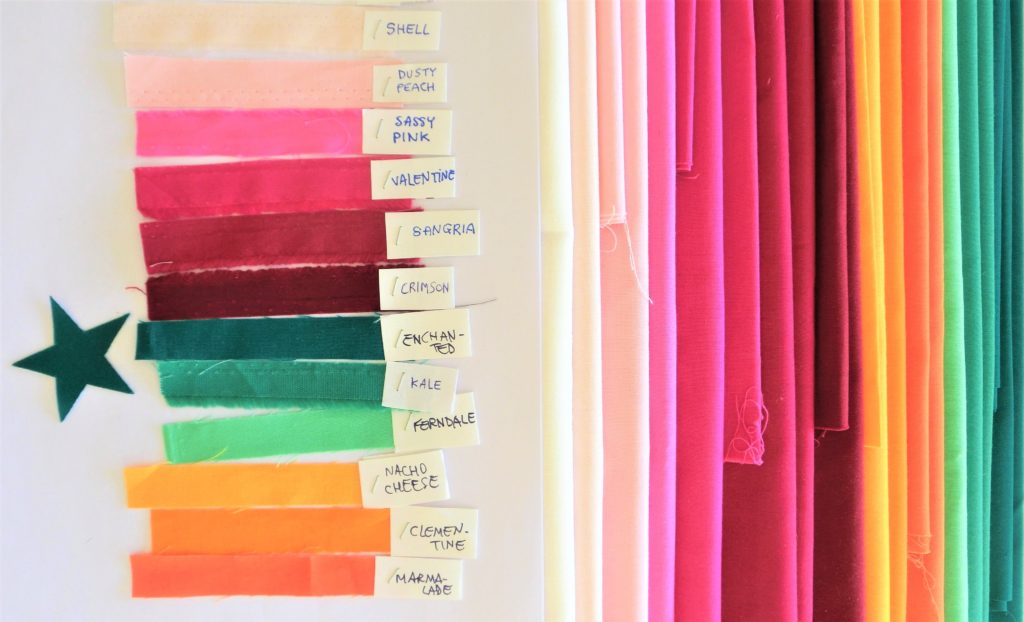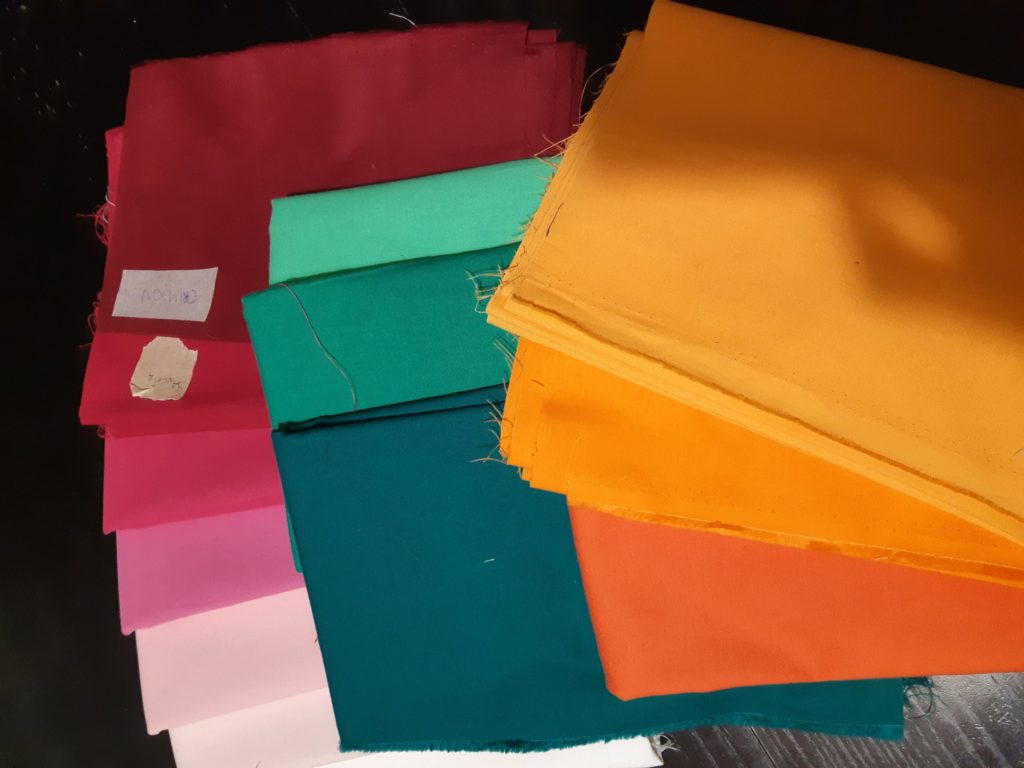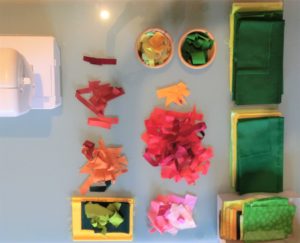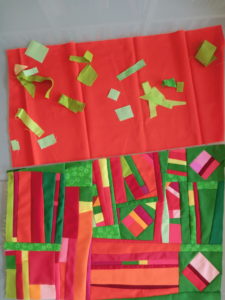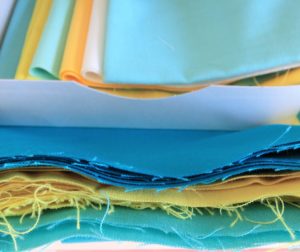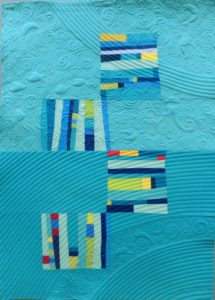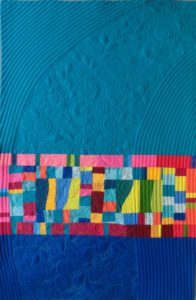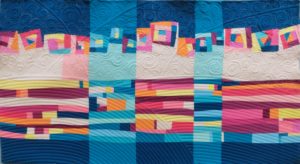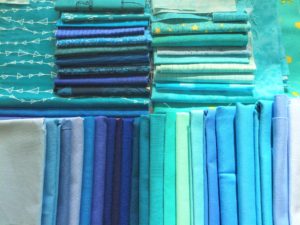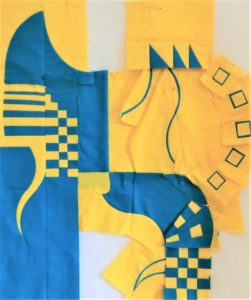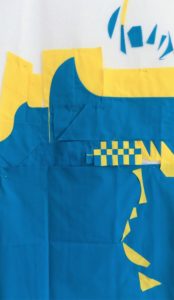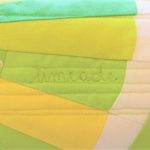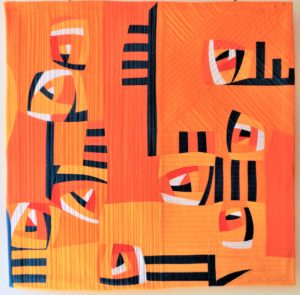Sometimes the stories are circular and repeated: they pass through trial and error, beta testing, until a final version is achieved.
This is the case of our quilting on-line games!
Now we will tell more about their background.
At the beginning of the current year, when Giovanna and myself started to be in contact on the web, we were considering the creation of something to be put into a common project. What if each of us compose an improvised quilt, by using the same colours and the same size? How different would be the results? How would our couple of works appear, if placed one by one aside, in a possible future showcase?
Giovanna proposed that we build a palette based on the Kona cotton colour of the year 2020, a dark green having the wonderful name: “Enchanted”, and I added the thought to combine some split-complementary colours, as described by Boulder Modern Quilt Guild at this link.
Spring was near to come, and we spent weeks sending to each other the photos of a possible colour choice! When everything was ready, we discovered to have purchased our common fabric stash just in time: the world had entered in a turmoil, and the supply shortage (caused by many shops closing down) was just one of many troubles!
Creativity helps to feel better, quilting ideas overlapped to each other, and this plan underwent a transformation several times.
I used the selected colours three times, before settling on a work that I felt to be green enough.
We met Carla @falcolupo, and this raised our wish to expand the network of contacts focused on improv!
Showcase plans transformed into our virtual project Quilt Improv Studio. A typical example of planning that changes on the road, because we are improv inside!
Carla’s input to the quilting game prompts became the start of our first Quilt Improv Studio challenge: she proposed that orange colour be used for common works on mini quilts, and that game became open to everybody!
Second open challenge on Blue Improv Repetition is still ongoing (you may share your work until January 10th).
In the meanwhile, we have completed our old project with the enchanted green fabric. During the year our plan has changed many times, but at the end we returned to our original idea: once we decided on the palette and the measures, we completed our two quilts without making comparisons.
In the next few days you will find out what we have realized: follow us on Instagram as @jonikquilts and @thecultofquilt to see our “different but equal” green quilts!
Some days ago Pantone and Robert Kaufman Kona Cotton released their 2021 Colors of the year.
Could they be a starting point for organizing Quilt Improv studio’s new challenge? We will see: new year is coming soon!
